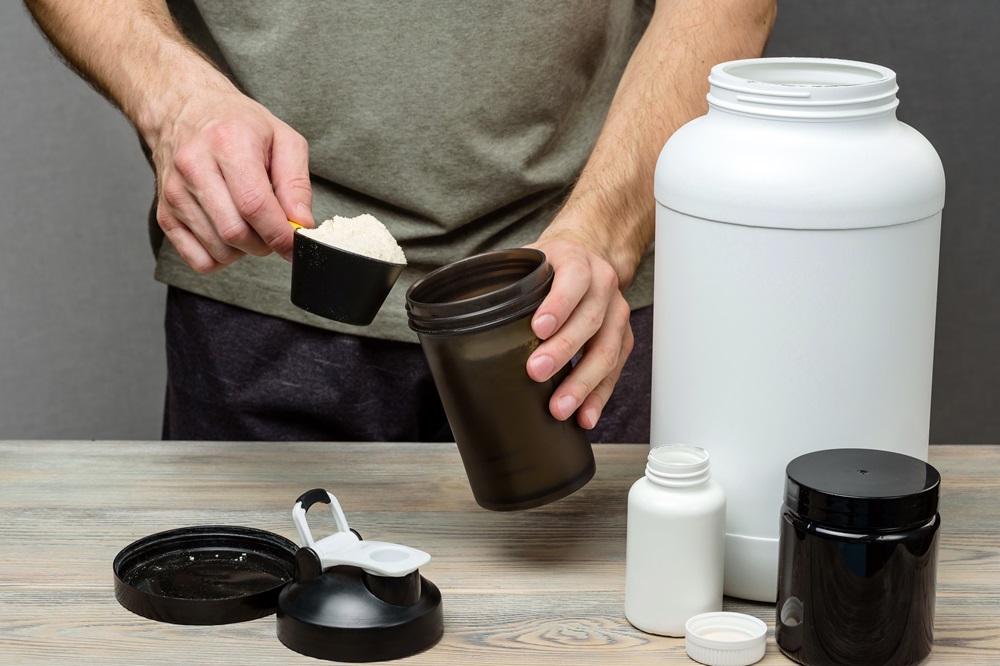Citrulline and creatine - when and how to use?

Citrulline and creatine are popular compounds that are willingly used by physically active people. Creatine can promote the increase of muscle mass and contribute to the improvement of exercise capacity, while citrulline can support the synthesis of nitric oxide and positively affect the effect of the muscle pump. Citrulline and creatine - which compound to choose? Is it worth taking citrulline and creatine at the same time?
Summary
Creatine - what is it?
Creatine is an organic chemical compound that combines the guanidine molecule with acetic acid. It is a substance called beta-methylguanidinoacetic acid, which in the human body can be naturally synthesized with the help of three amino acids - glycine, arginine and methionine. The compound can also be supplied to the body with everyday food - the ingredient is found in animal products such as meat, milk, dairy products or fish, as well as in the form of dietary supplements.
How does creatine work?
The creatine is the compound that has an anabolic effect, which can stimulate the synthesis of muscle proteins, while promoting the increase of muscle mass. The ingredient can also affect the increase in strength and endurance of the athlete, and can also promote the improvement of exercise capacity. The creatine may contribute to the increase of testosterone and growth hormone in the blood serum. What is more, the substance can positively affect the regenerative processes occurring in the body after completing physical activity, accelerating the body's return to full condition.
Recommended pre-workout supplements
What is citrulline?
Citrulline is a non-protein endogenous amino acid that can be naturally produced by the human body using glutamine. It is the substance that can be supplied to the body also with a daily menu - the citrulline can be found, among others, in watermelon, pumpkin, melon or cucumbers.
Effect and properties of citrulline
The citrulline is the compound that, together with arginine and ornithine, participates in the urea cycle, responsible for the removal of toxic substances from the body. It is the ingredient that can be metabolized in the body to arginine, which means that the citrulline can contribute to the formation of nitric oxide, causing the expansion of blood vessels and increasing the efficiency of oxygen and nutrient transport.
Moreover, the substance can positively affect the efficiency of workout, and can also contribute to increasing strength and endurance among physically active people. Some data also suggest that the citrulline may delay the fatigue, which may increase the duration of exercise among athletes.
Citrulline or creatine - which compound to choose?
The citrulline and the creatine are compounds that are very popular among physically active people. These are substances appreciated among athletes, which can have a positive effect on exercise capacity, as well as on the process of muscle regeneration after completing physical exercise.
Both the creatine and the citrulline can have a beneficial effect on the athlete's body, supporting the achievement of the desired training results. However, the selection of the right compounds remains a matter of individual needs of the body. When considering the use of valuable dietary supplements, it is worth considering the simultaneous intake of the creatine and the citrulline. Can the combination of compounds have a positive effect on the athlete's body?
Citrulline and creatine - together or separately?
Some valuable compounds should be used together to strengthen their action and increase the potential benefits of supplementation. How is it with the citrulline and the creatine? Is it better to take the compounds separately or supply them to the system at the same time?
The citrulline can most often be found in pre-workouts, which is due to the fact that the ingredient can contribute to increasing the endurance of the body during training, and can also reduce fatigue and muscle pain during activity. The creatine, on the other hand, can be used both before and after exercise. This is due to the fact that the compound can improve muscle performance and physical condition of the athlete, and can also support regenerative processes after the end of activity.
The data obtained so far suggest that the creatine used together with the citrulline may support strength workout or endurance training, showing synergistic effects. Simultaneous supplying of the citrulline and the creatine to the body may contribute to improving efficiency and may have a positive effect on the muscle pump. In addition, the creatine together with the citrulline can accelerate the development of muscle mass and increase strength. Combining substances can also reduce the feeling of fatigue during physical exertion, and thus can have a positive effect on the quality and effectiveness of practised exercises.

Citrulline and creatine - when to use?
The creatine is used both as a pre-workout preparation and as a supplement after physical activity. In turn, the citrulline is much more often taken as a pre-workout.
On the market of dietary supplements there are available comprehensive preparations containing the creatine and the citrulline, and sometimes also other valuable compounds, for example L-arginine, beta-alanine or caffeine, which facilitate the supplying of all the desired substances to the body. However, among the products, can be also found one-component preparations that are a source of the citrulline or the creatine - then the compounds can be taken together (for example before the start of activity), which can enhance the mutual action of the ingredients, or separately, for example, by consuming the citrulline before training, and the creatine immediately after its finishing.
The time of taking the citrulline and the creatine should be adjusted to the individual needs of the player. However, regularity are important - the citrulline and the creatine should be delivered to the body also on non-training days. In addition, it is worth remembering that the preparations should always be used in accordance with the manufacturer's guidelines - excessive supply of products may contribute to the occurrence of undesirable side effects.

